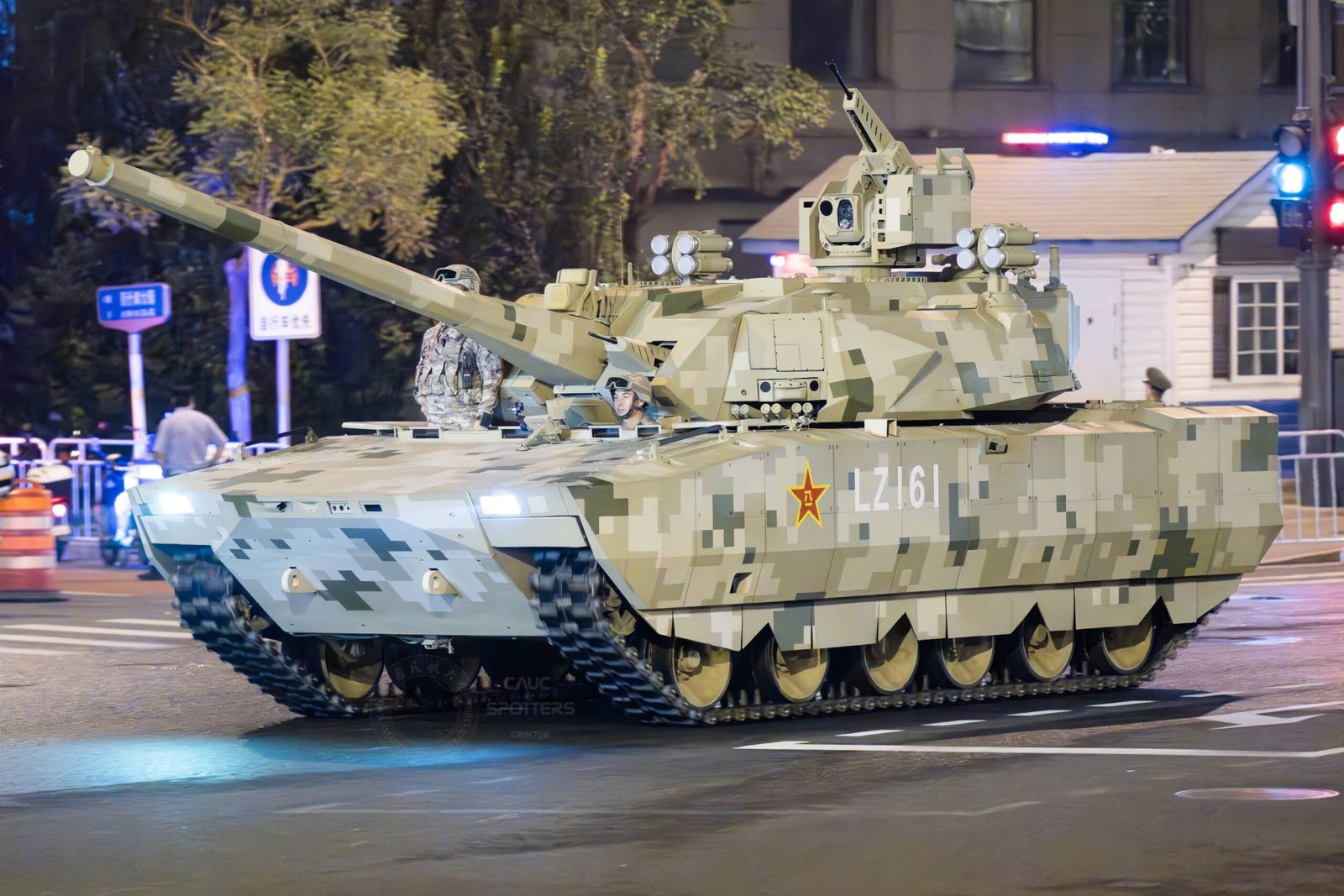
More Details Emerge on China’s next-gen Tank
China is preparing to unveil a new-generation battle tank that departs sharply from Western, American, and even Soviet design traditions.
Photographs from recent parade rehearsals captured the vehicle, which some sources identify as the ZTZ-201 (or ZTZ-20). Reports suggest it represents a revival of the medium tank category, weighing between 35 and 40 tons.
Unlike heavy main battle tanks fielded by other nations, the Chinese design emphasizes modularity, digitization, and hybrid propulsion. The tank reportedly features a power unit rated at 1,500 horsepower, combining a diesel engine, battery systems, and two electric motors with peak output. This configuration provides an extended operating range, with a maximum speed of 80 kilometers per hour on roads and 50 kilometers per hour across rough terrain.
The armament is described as a 105mm main gun. However, due to advances in propellant and kinetic energy delivery, its firepower is said to be comparable to NATO-standard 120mm and Russian 125mm tank guns. Sources note that armor-piercing fin-stabilized rounds can reach a muzzle velocity of 1,706 meters per second, placing its performance in line with larger-caliber counterparts.
The crew has been reduced to three personnel through automation. For the first time, operators are reported to be equipped with augmented reality headsets that enhance situational awareness. These headsets provide a digital overlay of battlefield information, integrating with the tank’s onboard systems to improve targeting, navigation, and threat detection.
The ZTZ-201 is also fitted with modern sensors that monitor the surrounding environment and detect potential threats. These are linked to the GL-type active protection system, designed to intercept incoming anti-tank projectiles. A remotely operated turret is mounted on the roof of the vehicle, which observers suggest may be intended to counter small drones, including first-person-view (FPV) systems increasingly used in modern conflicts.
Chinese engineers appear to have focused on creating a lighter, faster, and more versatile platform that blends traditional armor with advanced electronics and hybrid mobility. The concept diverges from Western heavy tank designs by trading mass for speed, digital integration, and survivability against drones and guided weapons.
The choice of a 35–40 ton class suggests a doctrinal shift. Medium tanks of this weight range had largely disappeared from service in major militaries, replaced by heavier main battle tanks or lighter infantry fighting vehicles. By reintroducing the category, China may be signaling a new approach to maneuver warfare, prioritizing operational flexibility and rapid deployment.
The public appearance of the tank during parade preparations comes amid a broader modernization of the People’s Liberation Army (PLA). While no official specifications have been released, the vehicle’s distinctive design elements highlight Beijing’s interest in applying new technologies to armored warfare.
Observers expect the ZTZ-201 to be formally presented during the September 3 military parade in Beijing, commemorating the 80th anniversary of the end of World War II. Such events have often served as platforms for China to reveal advanced weapons systems, offering glimpses of its evolving military doctrine.
Although details remain limited, the ZTZ-201’s modular design, hybrid propulsion, advanced sensors, and integration of augmented reality for its crew point to an ambitious effort to redefine the role of tanks on future battlefields.


